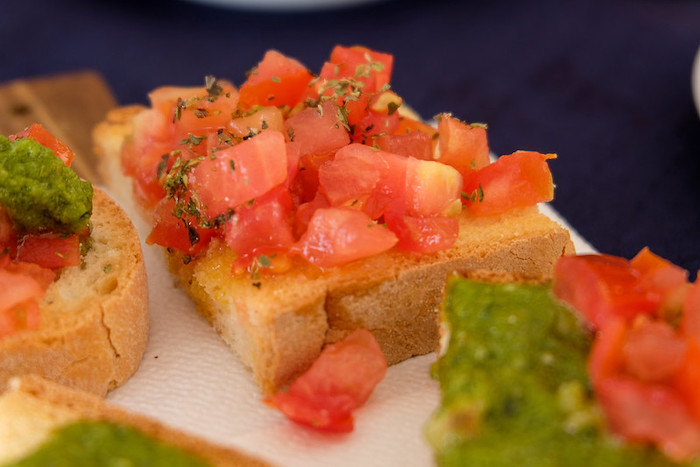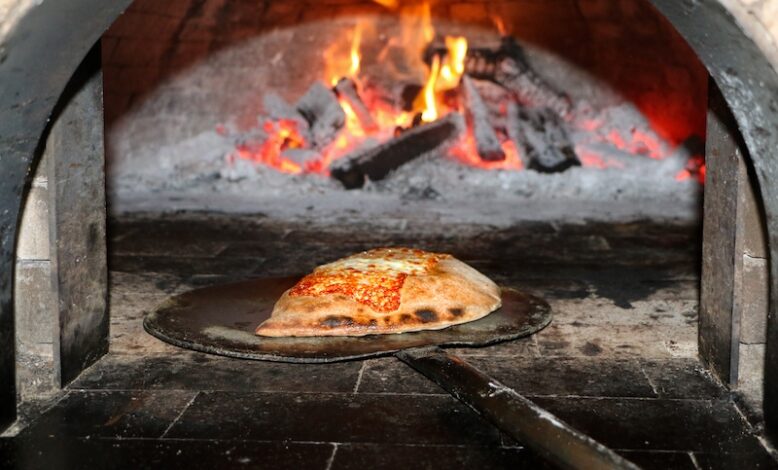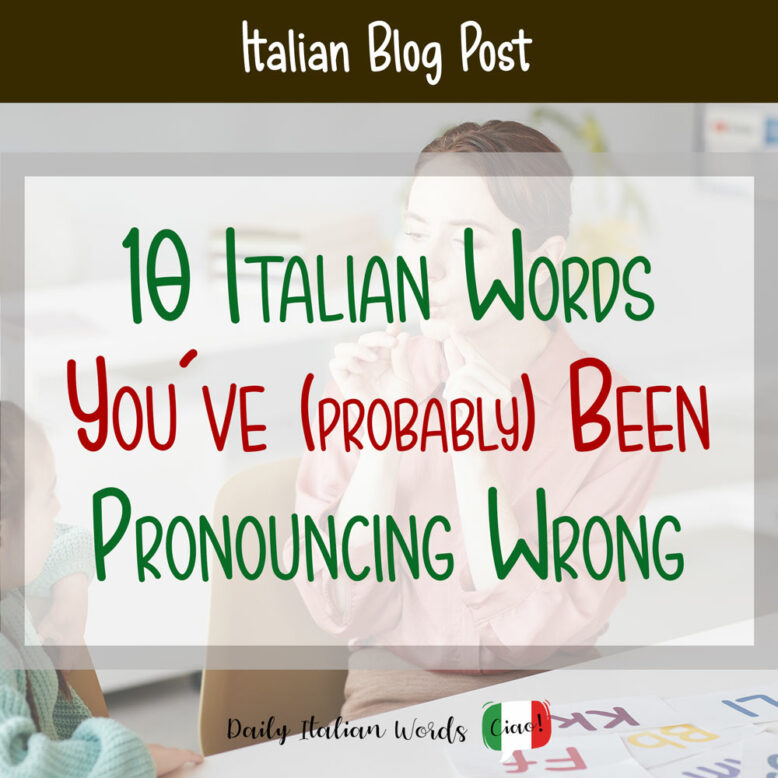While Italian is supposedly an easy language to learn for English speakers, most learners face pronunciation challenges at some point, in part because there are so many Italian loanwords in English whose pronunciation has changed to suit the cadence of the English language.
To speak with confidence and be understood in Italy, it is a good idea to purge your vocabulary of these pronunciation errors, at least when you are speaking in Italian! (When you’re speaking in English, go ahead and use the Anglicised version – otherwise you might be accused of sounding pretentious!)
Here are ten Italian words that you have probably mispronounced at some point on your language learning journey. Did the pronunciation of any of these words surprise you? Let us know in the comment section below!

1. Bruschetta
Bruschetta is a classic example of an Italian word that commonly gets mispronounced by English speakers. In English, we tend to pronounce it “bru-sheh-ta“ with a ‘sh’ sound but in Italian, sche is actually pronounced skeh.
A less serious error is the pronunciation of the double “tt” which English speakers say as either a single “t” or “d” depending on where they come from. In Italian, the double “tt” is clearly enunciated.
Listen to the correct pronunciation of bruschetta below:

2. Pistacchio
If bruschetta is our number one offender, pistacchio comes in a very close second!
In English, we use the spelling pistachio and pronounce the ‘ch‘ as a ‘sh‘, whereas in Italian, the ‘cch‘ is pronounced like a hard ‘k‘.
Listen to the correct pronunciation of pistacchio below:

3. Calzone
Some English speakers pronounce calzone with an ‘ee‘ sound at the end of the word, similar to the ‘ee‘ in “been“, while others leave off the ‘e‘ altogether, pronouncing ‘zone‘ like the English word “zone“. Unfortunately, neither sounds correct to the Italian ear!
The correct way to pronounce calzone in Italian is ‘cal-tso-neh’, as in the audio clip below.

4. Grazie
A dead giveaway that someone has never studied Italian, or has only just started learning, is their pronunciation of ‘grazie‘, which means ‘thank you‘. Many people fail to pronounce the word-final ‘e‘, transforming the word into something that sounds a bit like ‘grat-zi’.
In Italian, vowels are almost always pronounced individually, so you need to make sure to give equal importance to the ‘i‘ (which sounds a bit like a ‘y’ in this particular word) and ‘e‘. Have a listen to the audio clip below!

5. Per favore
Here is another expression that beginners and non-speakers of Italian notoriously garble. Because Spanish is so much more prevalent in the United States, many North Americans assume that per favore (which means ‘please‘) is pronounced in the same way as the Spanish ‘por favor‘.
As you can hear from the audio file below, ‘per‘ is pronounced with an ‘e‘ and ‘favore‘ finishes with a clearly pronounced ‘e‘.

6. Gnocchi
A forgivable error learners make when trying to pronounce gnocchi is assuming that the word-initial gn is pronounced like an ‘n‘, whereas in actual fact, it is a completely different nasal sound. To pronounce gn, start by placing your tongue behind your teeth, as you would to make an ‘n‘, and slowly slide it back to the palate while producing a nasal sound.
Another sound that poses a problem is the ‘o‘ which some learners pronounce like the ‘o’ in the English ‘poke’. It is actually closer to the ‘aw’ in ‘paw’.

7. Buongiorno
I can’t count how many times I’ve heard non-Italian speakers pronounce the Italian greeting buongiorno as bon-giorno. I think we can safely assume that the French greeting bonjour, which is pretty well-known among English speakers, is the culprit behind this erroneous pronunciation.

8. Minestrone
In all fairness, the English pronunciation of the word minestrone isn’t too bad. The important thing to remember is that the word-final ‘e‘ is pronounced like, well, an ‘e‘, not like the ‘ee‘ in ‘been‘.

9. Capri
Because in English we have the word ‘capri pants‘ (or simply ‘capris‘), it is natural to assume that the island Capri is pronounced in the same way. The truth is that in Italian, the emphasis falls on the first syllable ‘ca‘ rather than the final syllable ‘pri‘. Have a listen to the audio file below!

10. Espresso
Although many English speakers do pronounce espresso more or less as an Italian would, some people have the tendency to pronounce the ‘s’ as if it were an ‘x’, making it sound more like expresso. This is fine in English, but won’t fly if you’re trying to sound Italian.

Can you think of any other words English speakers mispronounce in Italian? Let us know in the comment section below!

Heather Broster is a graduate with honours in linguistics from the University of Western Ontario. She is an aspiring polyglot, proficient in English and Italian, as well as Japanese, Welsh, and French to varying degrees of fluency. Originally from Toronto, Heather has resided in various countries, notably Italy for a period of six years. Her primary focus lies in the fields of language acquisition, education, and bilingual instruction.


